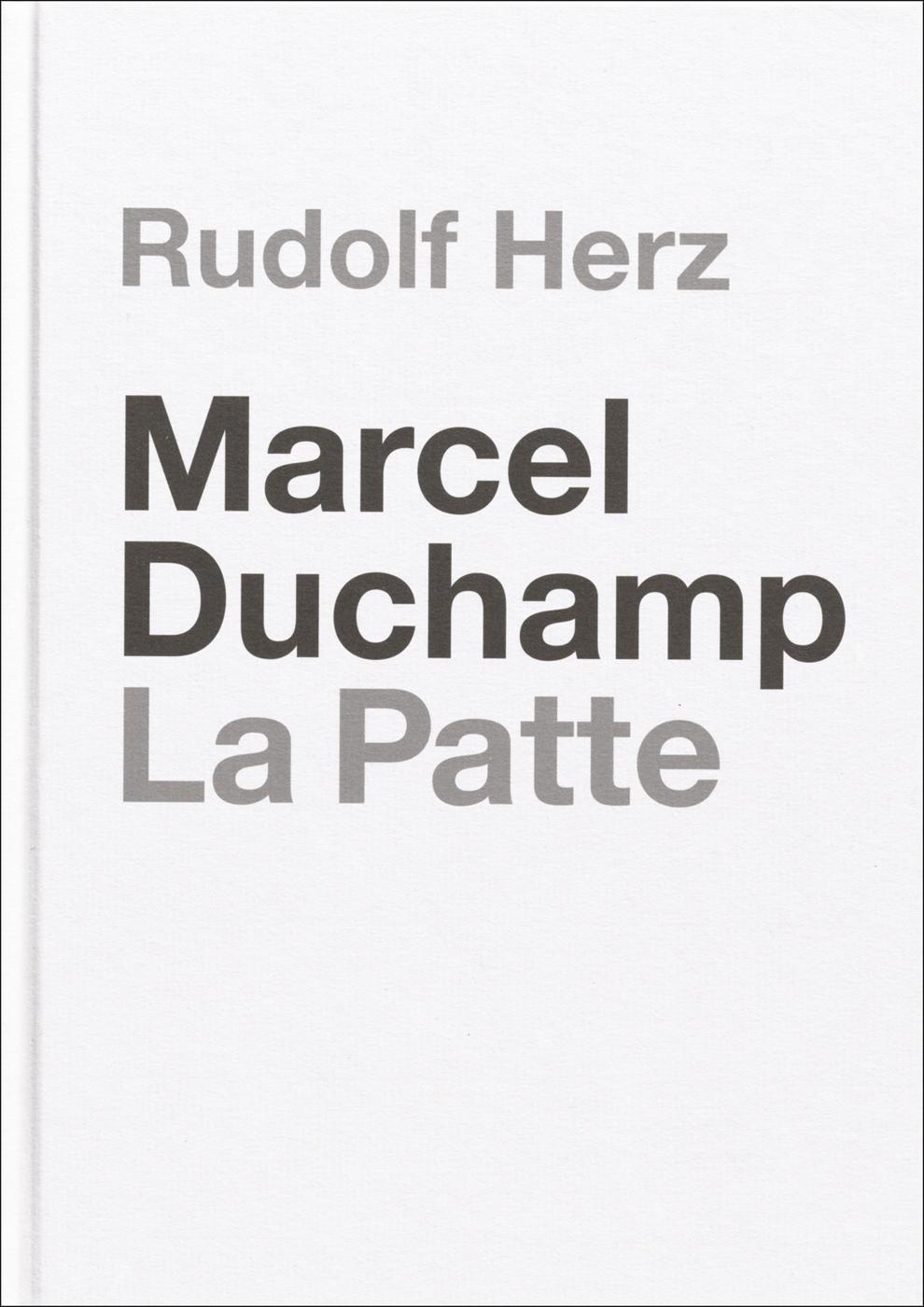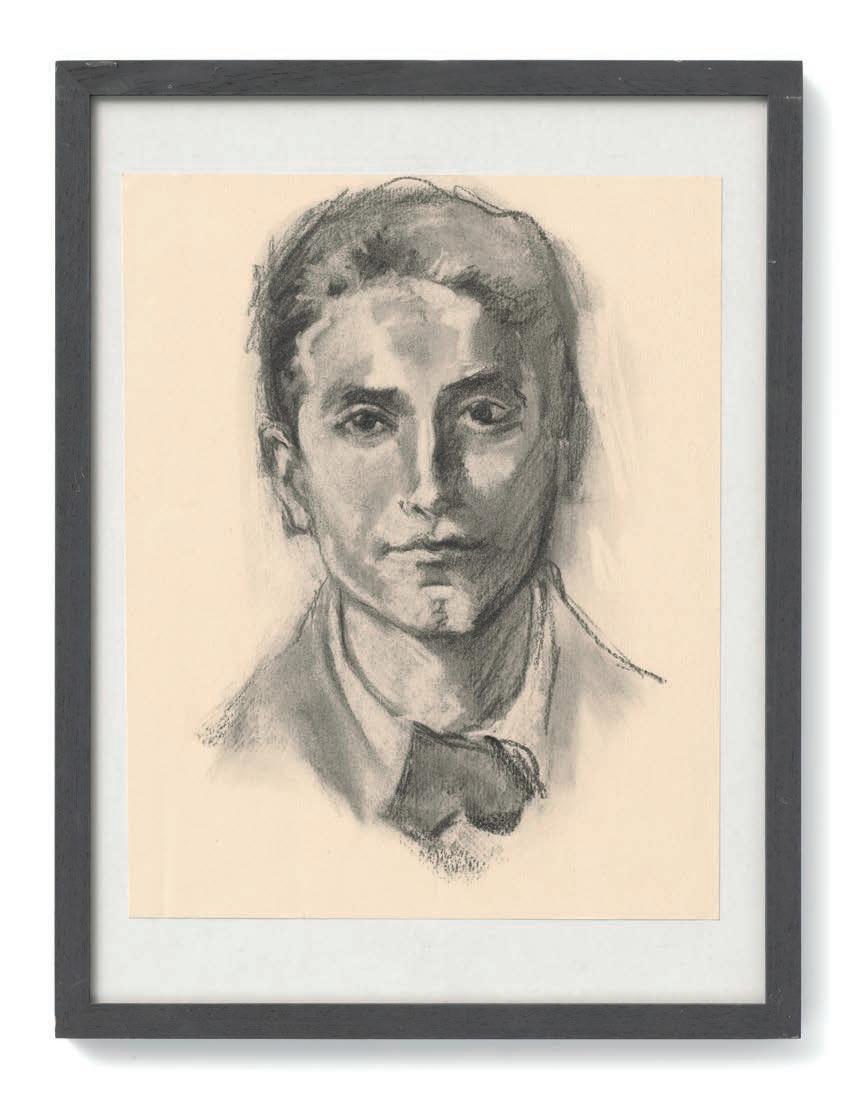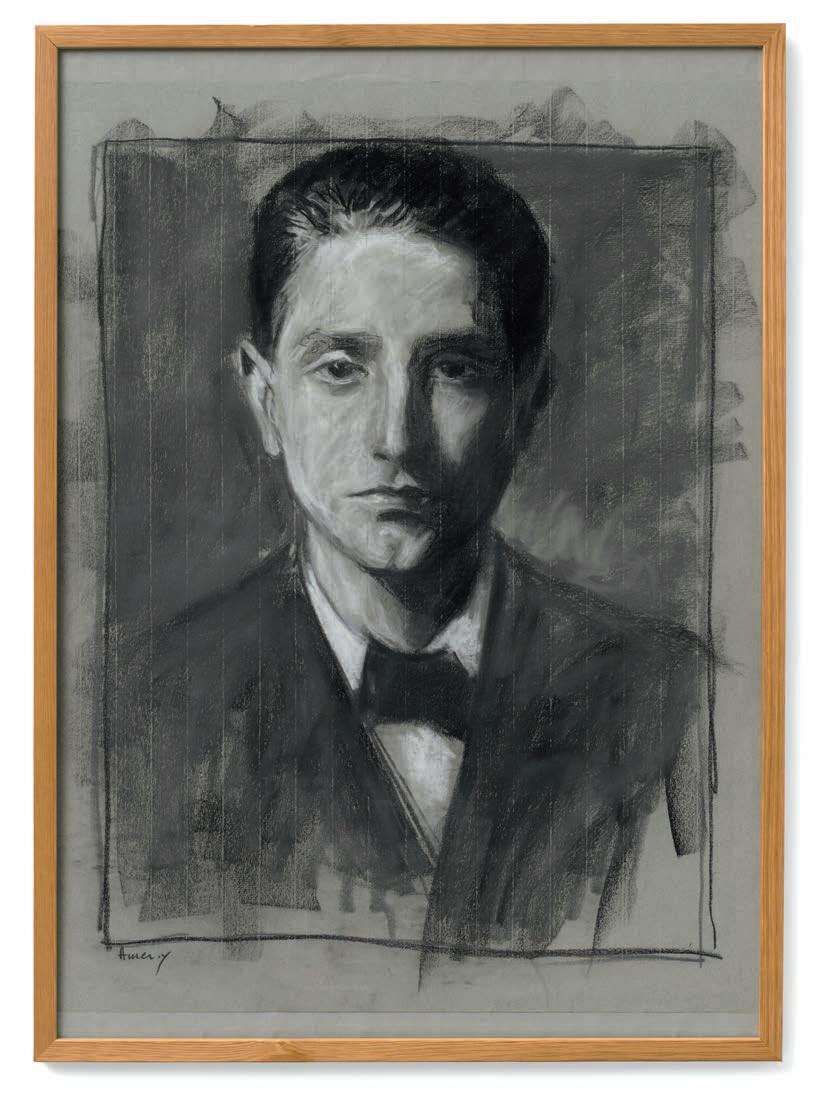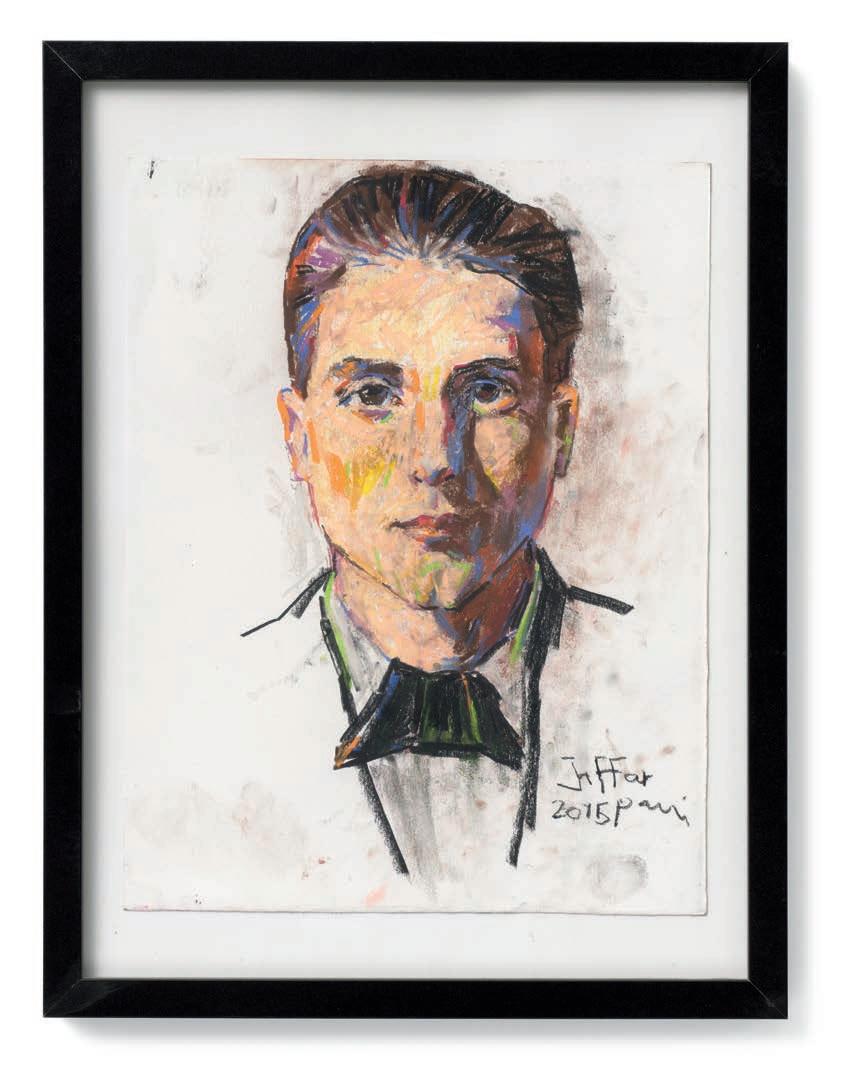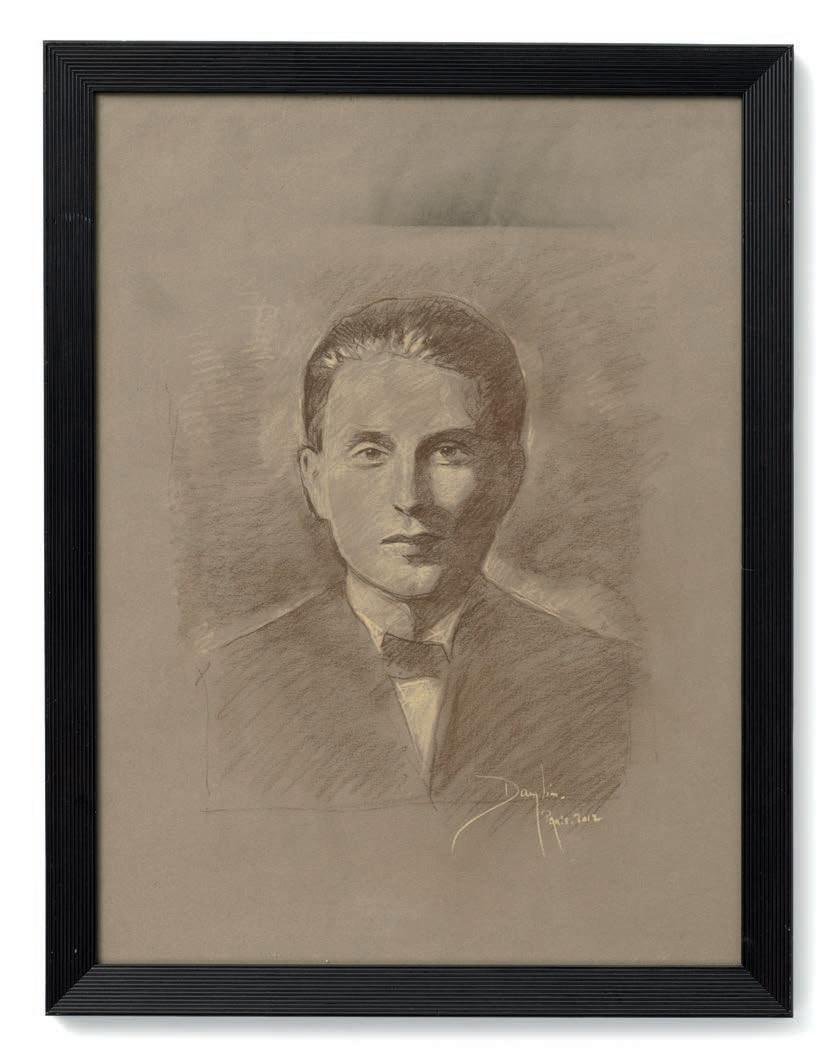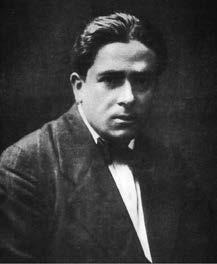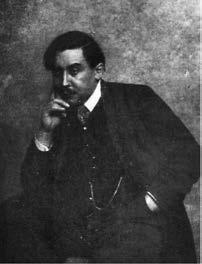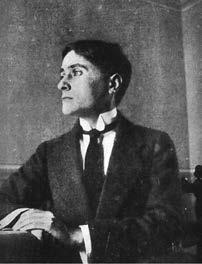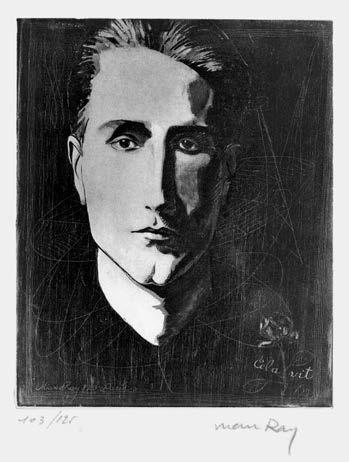Marcel Duchamps ›Portrait-Objekt‹, wiederbelebt
Welche Verführung geht von einem Pariser Straßenkünstler aus, sich von ihm zeichnen zu lassen! Zu gern möchte man wissen, wie er einen wahrnimmt und darstellt. Wird sein Portrait so ähnlich, wie ich mich kenne, oder ganz anders? Fokussiert es einen unbekannten oder lieber verborgen gehaltenen Charakterzug, den nur dieser Zeichner »hervorholt«?
Lange bevor es Fotoportraits gab, waren gezeichnete Wiedergaben eines Gesichtes Gang und Gäbe. Wer es naturgetreu zu zeichnen verstand, war zumeist erfolgreich. Dabei hoffte ein Modell nicht nur, endlich zu sehen, wie es aussah, womöglich anders als im Spiegel. Sondern es wünschte sich auch, erkennen zu können, wie andere (als pars pro toto für jeden) es wahrnehmen würden, denn eine Interpretation floss ganz selbstverständlich über die zeichnende Hand in die Linien mit ein. Zudem war der Umstand willkommen, dass durch die Zeichnung der Augenblick des Lebens überdauern könnte: jung und vielleicht schön oder ausdrucksstark und womöglich weise. Man wollte sich überraschen lassen: Welche Identität hatte darin das eigene Ich? Geduldig nahm man dafür als Modell vor dem Zeichner Platz – ob zu Hause, im Atelier oder auf der Straße – und wartete auf das Ergebnis. Dieses künstlerische Prozedere war lange Zeit keine Selbstverständlichkeit. Offiziell bürgerte es sich zumindest erst seit dem Ende des Mittelalters ein, als das ›Ich‹ endlich im Bild Eingang fand. Gezeichnet diente es bald einer Sammlung, als Unterpfand eines Vertrages, als Steckbrief oder auch als Werbung für einen Ehevertrag, wenn die tatsächliche Braut noch weit entfernt lebte und ihr Gesichtsbild beim eventuellen Bräutigam schon Gefühle auslösen
sollte. Also wurde ein Bild des Gesichts ein wichtiges ›Ding‹. Welche Revolution das war, ist im Selfie-Zeitalter nur schwer vorstellbar.
Gleiches Erstaunen weckt wohl heute die Geschichte der Portraitfotografie, denn einige Jahre nach der Erfindung (1826) der fotografischen Technik war es ab 1839 zunächst ein Privileg der Reichen, um sich in langen Sitzungen vor der Kamera umständlich ablichten zu lassen. Auch dies wurde ein ›Ding‹: Man handelte damit als ›carte de visite‹ für soziale Aufmerksamkeit und gegen das Vergessen. Die betroffenen Modelle betrachteten wohl staunend das abgelichtete Ergebnis: zumeist als ernst und starr blickendes Gesicht, von dem sie meinten, es halte das echte, das wahre Leben im Bild fest, viel realistischer als jede Zeichnung. Dass auch ein Fotograf seine Interpretation vom Modell einbrächte, blieb lange unbesprochen. Ein Foto gäbe die Wirklichkeit exakt wieder, so glaubte man. Sie entspräche doch einer genauen Identität des Gesichtes, so jedenfalls nahmen es Mediziner von fotografierten Hysterikern an, Polizisten von Fotos angeblicher und überführter krimineller Personen, Zollbeamte von Passfotos der Reisenden und Ethnologen von Serien-Aufnahmen (kolonialisierter) Außer-Europäern zwecks vermeintlicher wissenschaftlicher Untersuchungen. Sie alle glaubten bei ihren Foto-Sammlungen von direkten Gesichtsaufnahmen immer an im Bild materialisierte Realien der Betroffenen.
In Belgien wollte man schon ab 1870 solche sachlichen Gesichtsaufnahmen für Heimatlose, Vagabunden, Bettler und Verdächtige einführen, in Frankreich erst, nachdem Alphonse Bertillon 1882 die ›photographie signalétique‹ zur behördlichen Erfassung von Identitäten vorgeschlagen hatte. Er musste dennoch einräumen, dass damit die Bedürfnisse letztlich nicht zu erfüllen waren, weil Identität erst durch Verschiedenheit im Aussehen entsteht, wie Hans Belting in seinem Buch ›Faces. Eine Geschichte des Gesichtes‹ (2013) anschaulich schildert. Je versteinerter deren Blick in die Kamera wirkte, je maskenhafter die Vorderseite erschien, je deutlicher der Ohrenansatz zu sehen blieb, desto dinghafter erschien ein Mensch auf der Gesichtsaufnahme. Dinghaft – und also wie zu haben und zu handhaben – erschien somit die Identität jedes Menschen, ganz und gar eingeklemmt in den engen Rahmen der Gesichtsaufnahme.
Dinghaft ist hier Stichwort und zugleich Hypothese. Denn warum sollte sich Marcel Duchamp von dem Fotografen Heinrich Hoffmann 1912 bei seinem
DAN Y JIM
in this sterile manner? He looks bored, with the frozen face of a statue or porcelain doll, not seeking intense eye contact. He adopts the attitude of indifference that he was later to propagate as an artistic stance.
The portrait is quite atypical for the studio photography that was common at the time, as well as for portraits of artists at the time. You can see this when you compare it with the very individual portraits of fellow artists Francis Picabia, Albert Gleizes and Jean Metzinger in Apollinaire‘s book, all of whom endeavour to use painterly values and manipulations that can be classified as contemporary art photography. Duchamp clearly wanted to distance himself from this. The result of Hoffmann‘s portrait session is reminiscent of administrative passport and police photographs, which know no psychological empathy and are unconcerned with emotion and individual expression: an anatomical data sheet that treats the person as a mere object. This cool approach, this technical-machine concept, is an artistic achievement, a method that Duchamp owes to his stay in Munich.
Specifically, it was his visual experiences at the Deutsches Museum and at an industrial trade fair that probably led him to this approach. Last but not least, the close contact with his young landlords at Barer Strasse 65 will have played a role: a seamstress and an experienced engineer at the Maffei locomotive factory, who had previously headed the technical drawing department at Oldenbourg Verlag. The 12-square-metre room in this flat overlooking Barer Strasse, which Duchamp found offered in a newspaper advertisement, became the centre of
Francis Picabia, Albert Gleizes, Jean Metzinger, in: Guillaume Apollinaire: Méditations Esthétiques. Les Peintres Cubistes, Paris 1913
his new insights and his work during his three-month stay in Munich. This room, I claim, is the cradle of conceptual art! Together with the architect Peter Ottmann, I transformed the flat into a large sculpture on a scale of 1:1, tilted it 90 degrees and placed it in front of the Alte Pinakothek.
Duchamp‘s new approach was soon reflected in the development of the readymades and the concept of the ›Large Glass‹. Looking back, he explained that it was not even the depiction of movement in the spectacular work ›Nude Descending a Staircase‹ that »opened a window to something else« for him, but rather technical depictions and technical drawings. His polemic against »retinal painting«, the impression made by the eye, went hand in hand with his polemic against »artistic style«. He said to his biographer Calvin Tomkins in 1965: »The point was to forget my hand.« And elsewhere: »There is an old expression in French: ›la patte‹, which describes an artist‘s brushstroke, his personal style, his ›paw‹. I wanted to get away from ›la patte‹ and from all this retinal painting … from 1912 I decided to stop being a painter in the professional sense.«
Duchamp‘s portrait is without a »paw«, reduced to the utmost. It contains a minimum of information about the person, it is the radical negation of a personal
Man Ray: Cela vit, 1923
PHILIPP NORMA N JOH N
The self-portrait as a moment of liberation in Marcel Duchamp
A portrait photo, 17 unknown street painters of today and a biographical gap in the life of the artist Marcel Duchamp. In the meantime, Duchamp embodies one of the most influential positions of modernism. This tense starting point reveals aspects of an art-historical drama to which the Munich-based artist Rudolf Herz draws attention in his project, the results of which lead to this exhibition and are published here.
The location chosen by Rudolf Herz for his initiative was not chosen at random. For it was the city of Paris, the cradle of modern painting, which Marcel Duchamp had left in the summer of 1912 in order to distance himself from the disputes about the ›right‹ way of painting, which the Cubists and many other isms were claiming for themselves at the time. Duchamp was deeply involved in this scene. On the one hand, he had already sold paintings through the Salon d‘Automne, on the other hand, his ›Nude Descending a Staircase‹ was rejected even by his friends, whereupon he removed the painting from the Salon des Indépendants himself. Apollinaire had called another of his nudes »extremely ugly«. That doesn‘t sound good, but in the context of the debate about contemporary painting at the time, it doesn‘t necessarily have to be meant disrespectfully, especially as the same author included Duchamp in his anthology ›Les Peintres Cubistes‹ and even ennobled him at the end with the sentence, »It will perhaps fall to an artist as free
of aesthetic considerations and as concerned with energy as Marcel Duchamp to reconcile Art and the People.«1 Incidentally, Duchamp was in love with the wife of his friend Francis Picabia and had had a child with a married woman ... So an invitation from a painter friend to Munich came at just the right time.
Duchamp distanced himself from the Parisian art scene, his private entanglements, Cubism, painting in general ... and found himself in Munich. In Duchamp‘s own words: »My stay in Munich was the scene of my complete liberation.«
Rudolf Herz surmises that Hoffmann‘s portrait must be a key to this decisive moment, because the self-portrait has always been regarded as a document of the artistic attitude of the person portrayed. Dürer‘s self-portrait from 1500 hanging in the Munich Pinakothek, which Herz referred to in his publication ›Marcel Duchamp. Le Mystère de Munich‹ (2012) and which is clearly identified as such by the artist through the inscription, is a good example of the role the self-portrait can play for the artist. Duchamp would have seen it at the time.
The question of mimesis is at the centre of the modern phenomenon of the independent artist portrait. This is not only to demonstrate an artistic ability, but also to achieve a credibility based on the scientific knowledge of the time. Following Leone Battista Alberti‘s treatises on art theory from 1435, the artist‘s portrait finds its foundation in the ancient myth of Narcissus: »Consequently I used to tell my friends that the inventor of painting, according to poets, was Narcissus, who was turned into a flower; for, as painting is the flower of all arts, so the tale of Narcissus fits our purpose perfectly. What is painting but the act of embracing by means of art, the surface of a pool?« 2
The face in the mirror of the water surface as the cradle of painting! One could now argue: Hoffmann‘s portrait of Duchamp is not a self-portrait in the classical sense. But the notion that an object not made by the artist himself can carry an artistic statement can be found in Duchamp‘s readymades, which he conceived from this phase onwards in Munich. The question of the extent to which Duchamp‘s stage directions produced the indifferent expression, indeed the poker face of the photograph, is not known. Hoffmann‘s usual portraits of the time are in any case more conventional. The Duchamp portrait has something soldierly, even warlike about it. His features display an unemotional lack of intention. In the context of
